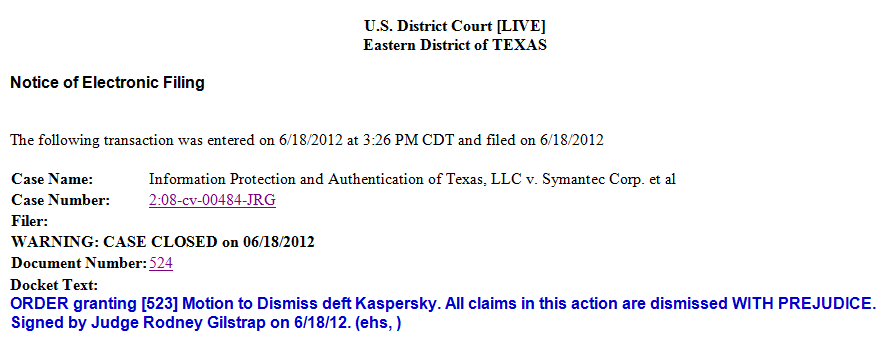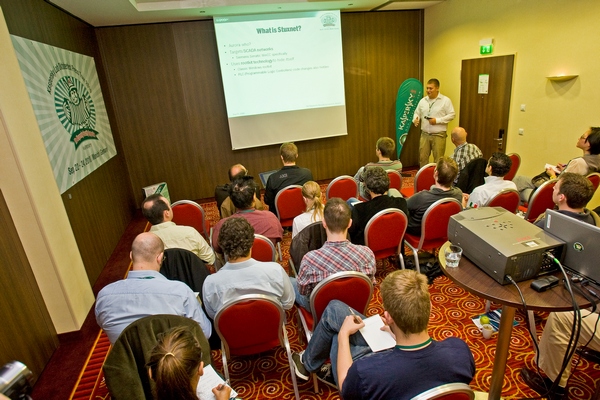July 3, 2012
Worse than Cheese: Scary Scenarios Causing Nightmares Now – the Five Main Issues of IT Security.
I recently found myself wondering how many interviews with the press I do every month. Of course the totals fairly helter skelter between months, but in the busier periods the number can get anywhere up to 70! And that’s only spoken interviews, i.e., those done in person or over the phone. If I were to also include e-mail interviews – the number would be just silly.
But I don’t complain. In fact just the opposite – I love interviews! Which reminds me of Richard Branson and his simple rule about interviews: “If CNN rings me up and wants to do an interview with me, I’ll drop everything to do it.” I also follow this rule – to the letter – and not without good reason.
Most interviews are what you’d expect. I get asked lots of questions, I answer them as best I can, and that’s about it.
But in a very few rare instances I get interviewed by a really well read-up journalist, meticulous to the point of hair-splitting, who not only knows all about me and KL and what we do, but also all about the particular narrow topic the interview’s about. By the end of the allotted hour I’m exhausted, the mind’s pretty much frazzled, and I feel like my very soul’s been extracted together with my long-winded answers to the sophisticated questions.
These are the trickiest and most trying kinds of interviews, but also the most useful. Why? Because during such intense sessions the gray matter inside the skull shifts up a gear or three and really gets to work, thinking in new ways and approaching familiar topics from fresh standpoints – to such an extent that after the end of the interview the momentum keeps the ideas coming, leading to all sorts of new insights. All really quite fascinating how creative cognition comes about. And all kicked-off by super-sharp reporters doing their job masterfully. Respect due. And a thank you!
Curiously, what unites such “special” interviews with regular ones is an inevitable question about the most pressing IT Security issues today – something like: “What keeps you up at night (in terms of IT Security hazards)?”! And I don’t get asked this all the time just by journalists in interviews. The question pops up at practically every IT conference I speak at.
And so: as promised earlier, here I’m presenting my List of the Five Main Issues Facing IT Security, in the broad sense of the term.
I should say straight away that I don’t have prescriptions for solving all five issues. The aim of this post is more to identify the problems, let you start to muse on them, and hopefully draw you into the fold of their ongoing discussion by raising your interest, empathy and/or sympathy!
Right, here’s my list:





![YOU CAN NEVER GET TOO MANY AWARDS. SEE 1ST COMMENT FOR ENGLISH ⏩
"А из нашего окна страна Австрия видна!" - практически (с). Но в этих австриях я был не смотреть из окна, а по многочисленным деловым делам, первое из которых - лично получить несколько важных наград и множество сертификатов от независимой тестовой лаборатории AV-Comparatives.
Это далеко не первая наша награда. Скажу больше - на протяжении последних десяти лет по результатам независимых тестов к нам даже близко ни один конкурент не подобрался. Но почему тогда такое внимание конкретно к этой победе? Ответ простой: густопопсовый геополитизм. В наше весьма геополитически [очень мягко говоря] непростое время... Ну, если отбросить все казённые слова, то будет, как в известном анекдоте про поручика Ржевского. В той самой истории, когда ему указали повторить свою фразу без матерщины. На что тот ответил: "Ну, в таком случае я просто молчал".
Так вот, в наше "поручико-ржевско-молчаливое время" участвовать и получить первые места в европейских тестах - это за пределами научной и ненаучной фантастики. Что в целом совпадает с одной из основных парадигм моей жизни: "Мы делаем невозможное. Возможное сделают и без нас" (с). Большими трудами и непомерными усилиями - да! Это можно! Мы заделали такие продукты, такие технологии, такую компанию - что даже в непростое время нас и в Европах знают, уважают, любят и пользуются. Ура!](https://scontent-iad3-2.cdninstagram.com/v/t51.29350-15/430076034_1096357205018744_692310533755868388_n.heic?stp=dst-jpg&_nc_cat=103&ccb=1-7&_nc_sid=18de74&_nc_ohc=XLII-tX29aoAX80SM4u&_nc_ht=scontent-iad3-2.cdninstagram.com&edm=ANo9K5cEAAAA&oh=00_AfBINCtkZ3-r_aTvdSC36JELI05V6PuBnMWs672PK3GsBQ&oe=65E63D48)










